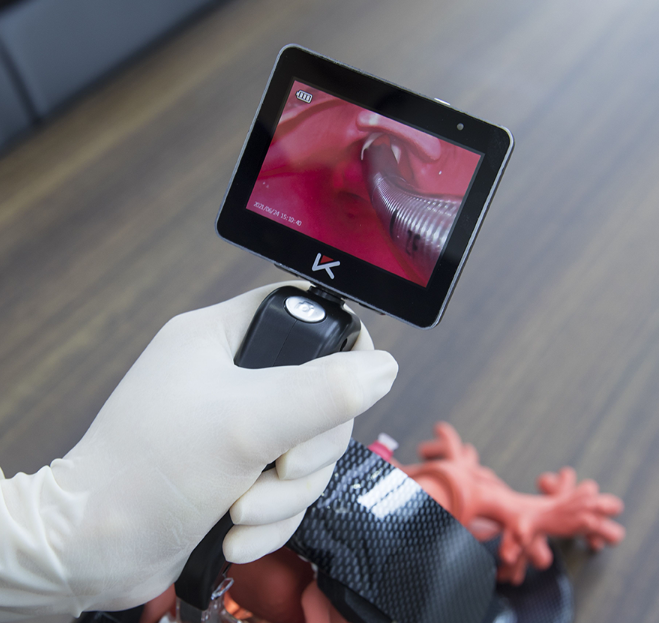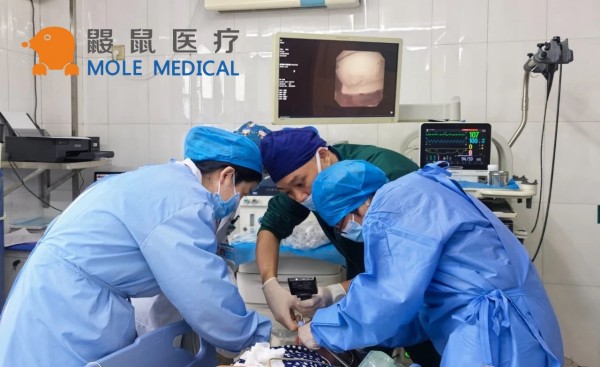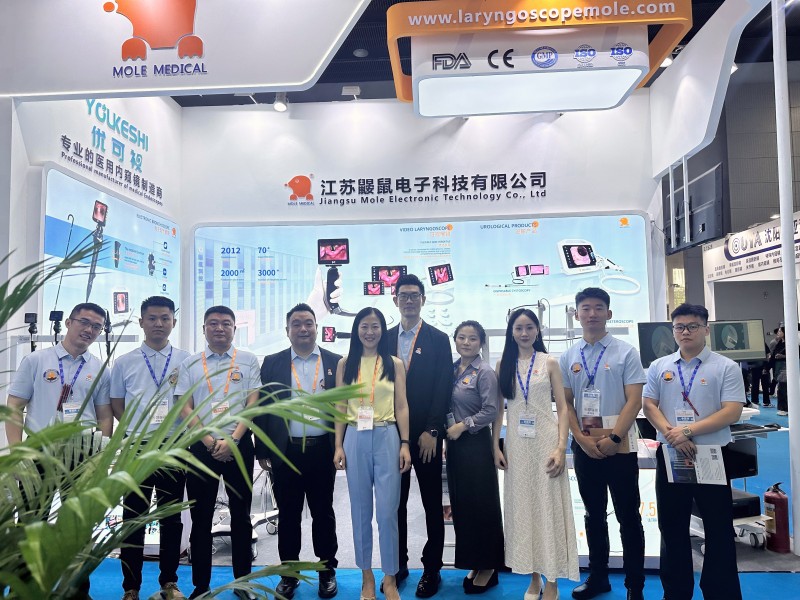Medical Monitor LCD in Healthcare: 2024 Wholesale Choice
Mar 12, 2024
In the dynamic landscape of healthcare, technological advancements play a pivotal role in enhancing patient care. Mole Medical, a renowned manufacturer in medical technology, has introduced cutting-edge LCD monitors tailored to address the specific needs of critical care environments such as the ICU, NICU, and emergency rooms.
Respiration Monitoring Solutions
1. Clear Imaging:
With a camera resolution of 960×480 (RGB) and 2 megapixels, Mole Medical’s LCD monitors offer clear imaging for respiratory assessments. Whether monitoring intubated patients or assessing lung function, these monitors provide detailed insights into respiratory status.
2. Optimal Illumination:
The natural white LED light source ensures optimal illumination during respiratory procedures, reducing the risk of errors and enhancing patient safety.
3. Flexible Rotation:
The monitors’ rotating angles (30º to 150º in front and rear, 0º to 270º right to left) allow for flexible positioning, facilitating comfortable viewing for healthcare providers during respiratory interventions.
Anesthesia Management Solutions
1. Integration with Instruments:
Mole Medical’s LCD monitors are designed to seamlessly connect with laryngoscopes, nephroscopes, and bronchoscopes, enhancing the efficiency of anesthesia management procedures.
2. Ergonomic Design:
With a lightweight construction weighing only 150g and versatile rotation capabilities, these monitors offer ergonomic solutions for anesthesiologists in diverse clinical settings.
3. High-Resolution Imaging:
The high-resolution camera captures detailed images, clearly visualizing airway anatomy and facilitating precise anesthesia administration.

Efficient Emergency Response
1. Instant Access to Critical Data:
During emergencies, every second counts. Mole Medical’s LCD monitors provide instant access to critical patient data, enabling healthcare providers to make swift and informed decisions.
2. Enhanced Visibility:
With an illuminance of ≥800 Lux, these monitors ensure optimal visibility even in high-stress environments, empowering emergency response teams to deliver timely interventions.
3. Compact and Portable:
The lightweight design and compact form factor of Mole Medical’s LCD monitors make them ideal for emergency response scenarios, allowing for easy transport and deployment.
Product Information: Mole Medical LCD Monitors
1. Display Options:
Available in 3″ and 5″ OLED variants, these monitors offer crisp and clear visuals for enhanced patient monitoring.
2. Camera Resolution:
With a resolution of 960×480 (RGB) and 2 megapixels, the camera delivers high-quality imaging for accurate diagnostics.
3. Illuminance:
The illuminance of ≥800 Lux ensures optimal visibility, critical for detailed observation and analysis in various medical procedures.
4. Light Source:
The natural white LED light source mimics daylight conditions, reducing eye strain and enhancing procedural accuracy.
5. Weight and Mobility:
Weighing only 150g, Mole Medical’s LCD monitors are lightweight and portable, facilitating seamless integration into medical workflows.
6. Versatile Rotation:
The monitors’ rotating angles (30º to 150º in front and rear, 0º to 270º right to left) offer ergonomic usability in diverse clinical settings.
Tips for Choosing the Right Medical Monitor LCD
1. Image Quality:
Opt for a medical monitor LCD with high-resolution imaging capabilities to ensure clear and accurate visualization during medical procedures. Look for features like high pixel density and color accuracy for precise diagnostics.
2. Durability and Reliability:
In a demanding healthcare environment, durability and reliability are paramount. Choose a monitor that is built to withstand frequent use and is resistant to factors like dust, moisture, and physical damage.
3. Compliance with Regulatory Standards:
Ensure the medical monitor LCD complies with relevant regulatory standards and certifications, such as FDA approval and CE marking. This ensures adherence to quality and safety standards in medical device manufacturing.
4. Integration and Compatibility:
Select a monitor that seamlessly integrates with your existing medical equipment and clinical workflows. Compatibility with instruments like laryngoscopes, nephroscopes, and bronchoscopes is crucial for streamlined operations.
5. User-Friendly Interface:
Look for a medical monitor LCD with an intuitive user interface and easy-to-navigate controls. A user-friendly design enhances efficiency and reduces the learning curve for healthcare professionals.
6. Service and Support:
Choose a manufacturer that offers comprehensive service and support packages, including warranty coverage, technical assistance, and software updates. Reliable customer support ensures peace of mind and minimizes downtime.
Wholesale Buying Guide for Medical Monitor LCDs
1. Research Suppliers:
Begin by researching reputable suppliers of medical monitor LCDs. Look for manufacturers with a proven quality and reliability track record, such as Mole Medical.
2. Contact Suppliers:
Reach out to potential suppliers to inquire about their product offerings, pricing, and wholesale options. Provide details about your specific requirements to receive tailored quotes and recommendations.
3. Evaluate Pricing and Terms:
Compare pricing and terms from different suppliers to ensure you’re getting the best value for your investment. Consider factors like bulk discounts, shipping costs, and payment terms when making your decision.
4. Request Samples:
If possible, request samples of the medical monitor LCDs you’re interested in to evaluate their quality and performance firsthand. This allows you to make an informed decision before placing a wholesale order.
5. Negotiate Terms:
Negotiate terms with the supplier to secure favorable pricing, delivery schedules, and warranty coverage. Establish clear communication channels and expectations to ensure a smooth transaction process.
6. Place Order:
Once you’ve finalized the terms with the supplier, place your wholesale order for the desired quantity of medical monitor LCDs. Confirm delivery details and timelines to ensure timely receipt of your order.
Why Choose Mole Medical?
1. Exceptional Quality:
Mole Medical is renowned for its commitment to delivering exceptional quality medical equipment. Our medical monitor LCDs are built to the highest standards of performance and reliability, ensuring optimal patient care.
2. Innovative Technology:
We leverage cutting-edge technology and advanced manufacturing processes to develop innovative medical solutions that meet the evolving needs of healthcare professionals.
3. Comprehensive Support:
Mole Medical offers comprehensive support services, including warranty coverage, technical assistance, and product training. Our dedicated team is committed to ensuring the success of our customers.
4. Trusted Reputation:
With years of experience in the industry, Mole Medical has earned a trusted reputation for excellence and integrity. Our customers rely on us for superior products and unparalleled service.
5. Contact Us:
For wholesale inquiries or further assistance, contact Mole Medical at +86 152 6201 9373 or email penny@laryngoscopemole.com. Our team is standing by to assist you with all your medical monitor LCD needs.
Conclusion
Mole Medical’s LCD monitors represent a significant advancement in medical technology, catering to the complex needs of critical care environments. From real-time monitoring in the ICU to precise anesthesia management and rapid emergency response, these monitors offer versatile solutions to enhance patient care and improve clinical outcomes.
Categories
Latest Articles

Disposable Nephroscopes: Redefining Safety & Efficiency in Urology
Introduction The shift towards minimally invasive urological surgery has found a pivotal ally: the disposable nephroscope. As traditional reusable scopes grapple with persistent biofilm contamination risks and soaring sterilization costs, the global medical community is rapidly adopting single-use solutions. This article analyzes the clinical value, technological evolution, and dynamic innovation landscape driving this transformative shift. ... Read more

Disposable Video Laryngoscope Blades: The Ultimate Solution for Preventing Cross-Contamination
In the operating room, as the cold light of a video laryngoscope illuminates a patient’s airway, an age-old medical challenge is being redefined: How can life-saving instruments avoid becoming vectors of infection? Jiangsu MoleMedical drives an innovative safety revolution—replacing reusable devices with single-use, sterile laryngoscope blades that create a pure barrier for critical airways. Traditional video ... Read more
-2.jpg)
FDA & CE Approved Video Laryngoscope: What Makes It Stand Out?
Introduction In high-pressure emergencies and precision-driven operating rooms, video laryngoscopy is revolutionizing airway management. Mole Medical’s FDA and CE-certified technology replaces tactile-dependent “blind intubation” with real-time visual navigation – enhancing safety, accuracy, and clinical outcomes worldwide. Why Certification Matters Mole Medical’s dual certifications validate its global compliance and performance: FDA Clearance: Rigorous validation of safety/efficacy ... Read more

Mole Medical Showcases Advanced Endoscopy Solutions at CMEF Autumn 2025, Driving Global Partnerships
Guangzhou, China – September 26-29, 2025 – The 92nd China International Medical Equipment Fair (CMEF Autumn) concluded successfully on September 29th at the Canton Fair Complex in Guangzhou. Mole Medical Technology Co., Ltd. (Mole Medical) made a significant impact at the event, drawing global medical professionals and partners to its booth (Hall 2.1, Stand Q24) ... Read more

How to Use Disposable Ureteroscopes Safely and Efficiently
In the field of urology, the application of disposable electronic ureteral-kidney pelvis endoscopy catheters is leading the technological innovation in minimally invasive surgeries. According to the 2024 multi-center research data from China’s urology department, among the over 5,000 surgeries included, the patient group using disposable catheters performed significantly better in key indicators such as operation ... Read more



